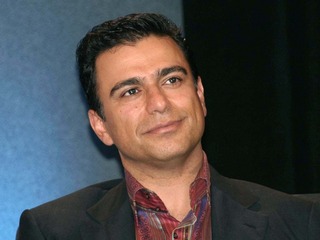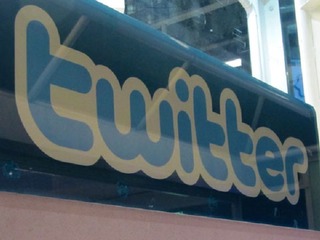DrFirst buys prior authorization automation platform Myndshft
This will allow DrFirst to accelerate its growth in the specialty medication space
Read more...
Diversity, or the lack thereof, In Silicon Valley has been on the minds of many in the last couple of years, and numerous companies have pledged to help fix the problem.
One of the most outspoken on the issue has been Twitter, which has pledged to do better. So far, the company has been making some real progress, particularly on its Board of Directors. In just the last six months, the company has added four new members to its board, three out of four of which have been minority hires.
The latest addition is Debra Lee, who has been CEO of Black Entertainment Television (BET). She was also named Chair of the company's Nominating/Governance committee.
The announcement was made by CEO Jack Dorsey, on Twitter.
Welcome @IamDebraLee to the Twitter Board! And announcing @marjscar as our new lead independent director!
— Jack (@jack) May 16, 2016
And @IamDebraLee is now Chair of our Nominating/Governance committee
— Jack (@jack) May 16, 2016
Lee also Tweeted out the announcement:
Thrilled to be joining the @twitter board. It's transformed the media and the world like few other things in history (and continues to)!!
— Debra Lee (@IamDebraLee) May 16, 2016
Lee has spent the majority of her career at BET. She first joined the network as Vice President and General Counsel in 1986 after serving more than five years as an attorney with Washington, D.C.-based Steptoe & Johnson, a corporate law firm. In March 1996, she became President and Chief Operating Officer of BET Holdings. In 2005, she became President and Chief Executive Officer. She also serves on board of directors of Marriott, and Revlon.
This is a pretty big announcement for Twitter, as Lee will be the first African American board member that Twitter has ever had. She will also be the third woman; the first was Marjorie Scardino, former CEO of Pearson, who was appointed in 2013, and the second was Martha Lane Fox, co-founder and managing director of lastminute.com, who was appointed in early April.
In addition to Lee and Fox, Twitter has also added Iranian-born Googler Omid Kordestani, as well as Hugh Johnston, Vice Chairman and Chief Financial Officer of PepsiCo.
Kordestani also Tweeted his congratulations to Lee.
Welcome @IamDebraLee, @BET chair and CEO, to the @twitter board!
— Omid Kordestani (@omidkordestani) May 16, 2016
Diversity at Twitter
Twitter has become a priority for Twitter lately, especially since Dorsey took over last year.
In 2014, the company revealed that it had employees who were 70% male, 59% white, and 29% Asian. In August the company outlined its goals for 2016, which included increasing women to 35% and increasing underrepresented minorities overall to 11%.
"As we look ahead, we see opportunity rather than a challenge: an opportunity to build a platform and a company that will better serve the diverse community on Twitter and the increasingly diverse one at Twitter," the company wrote.
It's a laudable goal, but it has not come without some controversy.
In November, Leslie Miley, a former Twitter engineer who is African American, took to Medium to blast the company for its lack of diversity.
"Twitter’s issues with growth and engagement and the issues with internal diversity are somewhat related. The over-reliance on a limited number of schools and workplaces for talent has caused a type of group think to dominate," Miley wrote. "Any change would be approved by people who all think alike. There was very little diversity in thought and almost no diversity in action."
"With my departure, Twitter no longer has any managers, directors, or VP’s of color in engineering or product management."
He also described an exchange with Alex Roetter, Twitter's SVP of Engineering, in which Roette told him, that while “diversity is important, but we can’t lower the bar.”
Roetter went on Medium to explain those comments, and to apologize.
Then, in December, Twitter went and got a new VP of Diversity and Inclusion, hiring Jeffrey Siminoff, who held a similar position at Apple. The move was controversial, however, given that Siminoff is white and a man, and many felt he may not have the same perspective as those who are routinely discriminated in the workplace.
Even though Twitter has sometimes stumbled on the subject, it is still committed to the cause of making its workplace more diverse.
(Image source: betpressroom.com)
This will allow DrFirst to accelerate its growth in the specialty medication space
Read more...The company initially raised $3 million in seed funding when it launched in October
Read more...This is the company's first fundraising since 2019 and brings its total capital to $103M
Read more...Startup/Business
Joined Vator on
Twitter is an online information network that allows anyone with an account to post 140 character messages, called tweets. It is free to sign up. Users then follow other accounts which they are interested in, and view the tweets of everyone they follow in their "timeline." Most Twitter accounts are public, where one does not need to approve a request to follow, or need to follow back. This makes Twitter a powerful "one to many" broadcast platform where individuals, companies or organizations can reach millions of followers with a single message. Twitter is accessible from Twitter.com, our mobile website, SMS, our mobile apps for iPhone, Android, Blackberry, our iPad application, or 3rd party clients built by outside developers using our API. Twitter accounts can also be private, where the owner must approve follower requests.
Twitter started as an internal project within the podcasting company Odeo. Jack Dorsey, and engineer, had long been interested in status updates. Jack developed the idea, along with Biz Stone, and the first prototype was built in two weeks in March 2006 and launched publicly in August of 2006. The service grew popular very quickly and it soon made sense for Twitter to move outside of Odea. In May 2007, Twitter Inc was founded.
Our engineering team works with a web application framework called Ruby on Rails. We all work on Apple computers except for testing purposes.
We built Twitter using Ruby on Rails because it allows us to work quickly and easily--our team likes to deploy features and changes multiple times per day. Rails provides skeleton code frameworks so we don't have to re-invent the wheel every time we want to add something simple like a sign in form or a picture upload feature.
There are a few ways that Twitter makes money. We have licensing deals in place with Google, Yahoo!, and Microsoft's Bing to give them access to the "firehose" - a stream of tweets so that they can more easily incorporate those tweets into their search results.
In Summer 2010, we launched our Promoted Tweets product. Promoted Tweets are a special kind of tweet which appear at the top of search results within Twitter.com, if a company has bid on that keyword. Unlike search results in search engines, Promoted Tweets are normal tweets from a business, so they are as interactive as any other tweet - you can @reply, favorite or retweet a Promoted Tweet.
At the same time, we launched Promoted Trends, where companies can place a trend (clearly marked Promoted) within Twitter's Trending Topics. These are especially effective for upcoming launches, like a movie or album release.
Lastly, we started a Twitter account called @earlybird where we partner with other companies to provide users with a special, short-term deal. For example, we partnered with Virgin America for a special day of fares on Virginamerica.com that were only accessible through the link in the @earlybird tweet.
What's next for Twitter?
We continue to focus on building a product that provides value for users.
We're building Twitter, Inc into a successful, revenue-generating company that attracts world-class talent with an inspiring culture and attitude towards doing business.



